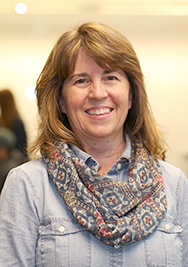By Alyssa Foy | Reporter
Dr. Anne Spence, assistant chair and clinical associate professor of mechanical engineering at Baylor, helped forge a path for women in mechanical engineering when there were not many and continues to inspire undergraduates at Baylor.
Spence began her work in the field at a very young age when she began accompanying her father, a professor of aerospace engineering, on flights. Spence said she recognizes her parents as major inspirations for her interest in engineering, as their support was encouraging and unwavering.
“My family allowed me to pursue my interests at a time where girls where kind of told, ‘you know, you should maybe be a nurse or, you know, a teacher or something like that,’” Spence said. “They both opened these opportunities up for me and never kind of aimed me down one path.”
However, she said that female inspirations within the field were difficult to find. As an undergraduate at the Missouri University of Science and Technology, women faculty and undergraduate peers were few and far between.
“I wonder if having a faculty member at the front of the room who was female would encourage more women to stick with [engineering],” Spence said. “They always say, you can’t be it if you can’t see it.”
Spence then decided to pursue a doctoral degree and became the first woman to graduate with a Ph.D in aerospace engineering, with a specialization in rotorcraft, from the University of Maryland, College Park.
Spence said that this experience as a woman in engineering now greatly influences her research which focuses on expanding the K-12 engineering pipeline, by improving material retention and training faulty in effective teaching strategies.
“In engineering, the more people you have at the table with diverse backgrounds, the better your products are,” Spence said. “I think it was always my goal to increase the engineering pipeline K-12 through grad school, ensuring that all students… could see themselves as engineers and had the opportunity.”
Spence advises the Society of Women Engineers (SWE), a student organization at Baylor that meets to support, mentor and provide professional development opportunities to women majoring in engineering, according to their website.
In a traditionally male-dominated field, Morton, Ill. senior and president of the Baylor chapter Maria Feucht said gender perceptions do play a role in her experience as a student.
“I think that what has defined my experience so far as a woman in engineering is the feeling that I have to prove myself in a way that male students don’t,” Feucht said. “There’s a lot of added pressure that I think has both an extrinsic source (implicit gender bias) as well as an intrinsic source (my perception of how others view me).”
Chandigarh, India junior Anna Sahdev is the internal vice president for the organization and said that demographics in engineering are changing, due to both perception and an expanding industry.
“I think historically there was like a certain amount of stigma associated with it in terms of like women were just say restricted to certain jobs,” Sahdev said. “The industry has shifted as well, because initially men were getting paid more, they were in more positions of power, but it’s transforming and that’s shifting.”
Sahdev’s specific interests lie in engineering research and policy implementation. “For me personally, I want to be involved in working with people, and being able to… make a change or make an impact to people on a wider scale,” Sahdev said.
Engineering research and policy is just one potential avenue for engineering majors to pursue their career interests, as Sahdev said peers who are interested in both humanitarian engineering and biomedical engineering, as well as using engineering as an undergraduate background before applying to medical school.
“With these growing opportunities, you’ll see a lot more women getting into engineering,” Sahdev said.



